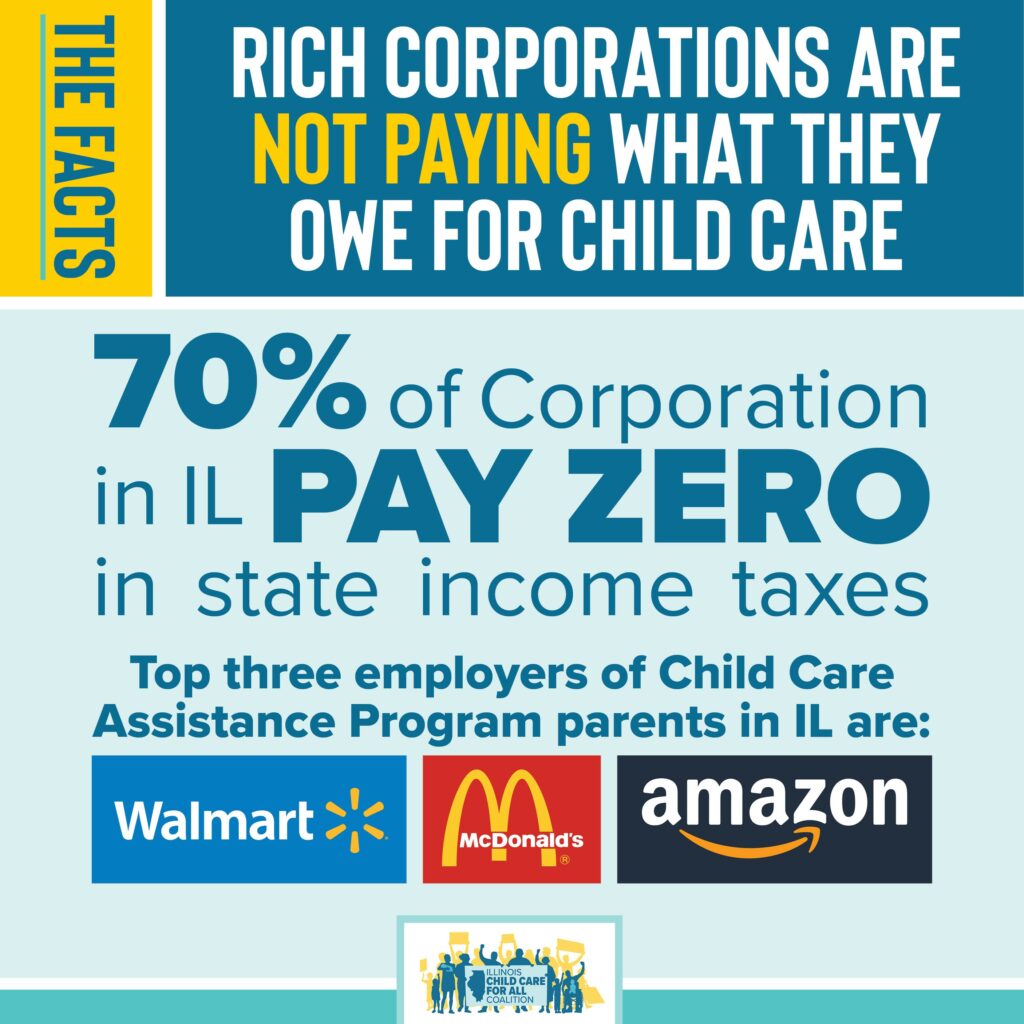Facts/Previous Reports
Read our reports
October 2022 Report: – Child Care for All: A Universal Child Care System and How we Build It.
May 2022 Report – Child Care in Illinois: Parents Can’t Afford to Pay. Workers Can’t Afford to Stay.
See information from our first report below.
Unavailable
- 58% of the population in IL lives in an area where there aren’t enough nearby child care providers to meet the need.
- There are not enough child care spots available for half of Illinois children under six (609,430 vs. 279,048 in 2020.
- The number of licensed child care slots declined each year from 2016-2020, with 52,516 licensed child care slots lost in total.
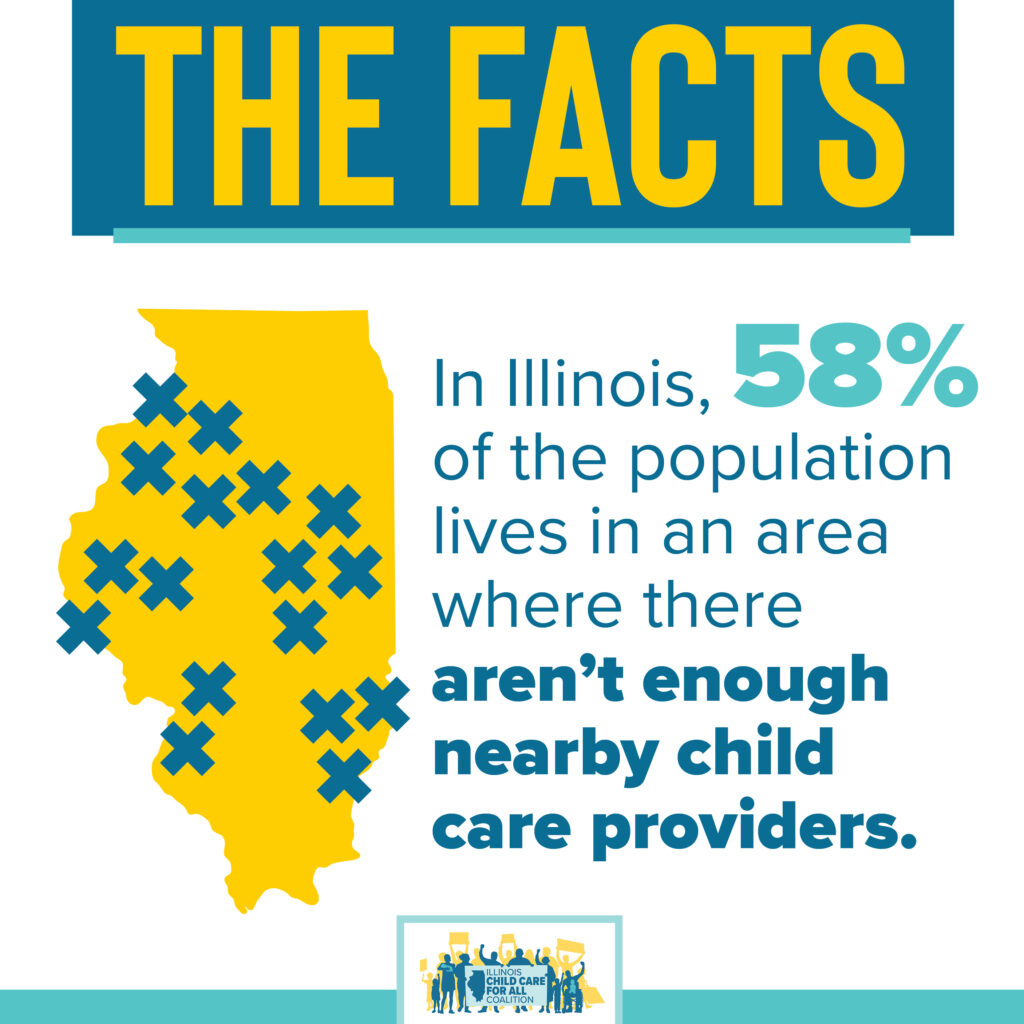
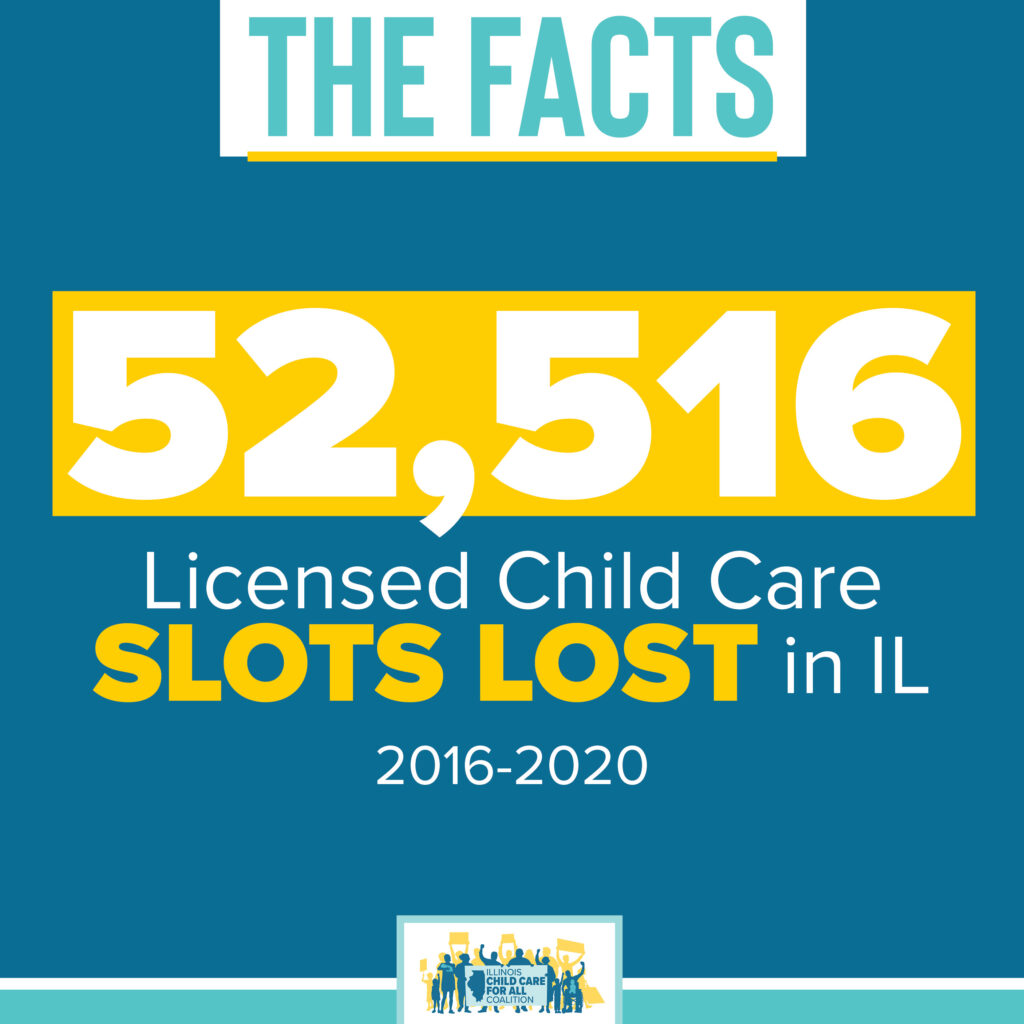
Unaffordable
- Infant care for one child in a center costs on average $13,000 annually in Illinois, and much more in Cook County
- Child care is the largest expense for parents of children ages 4 to 8.
- For families that rely on the Child Care Assistance Program (CCAP), the income threshold for eligibility on the program ($53,000/year) excludes a significant number of working families from the program.
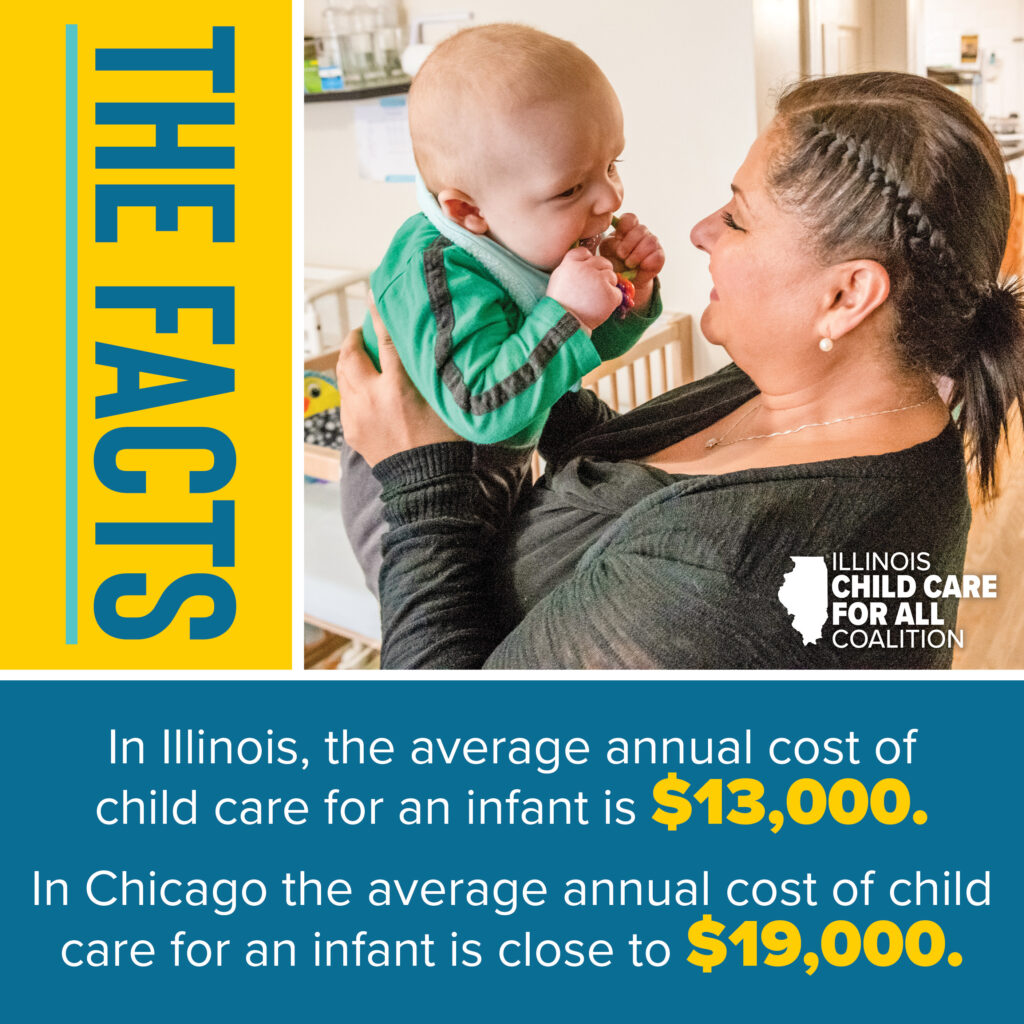
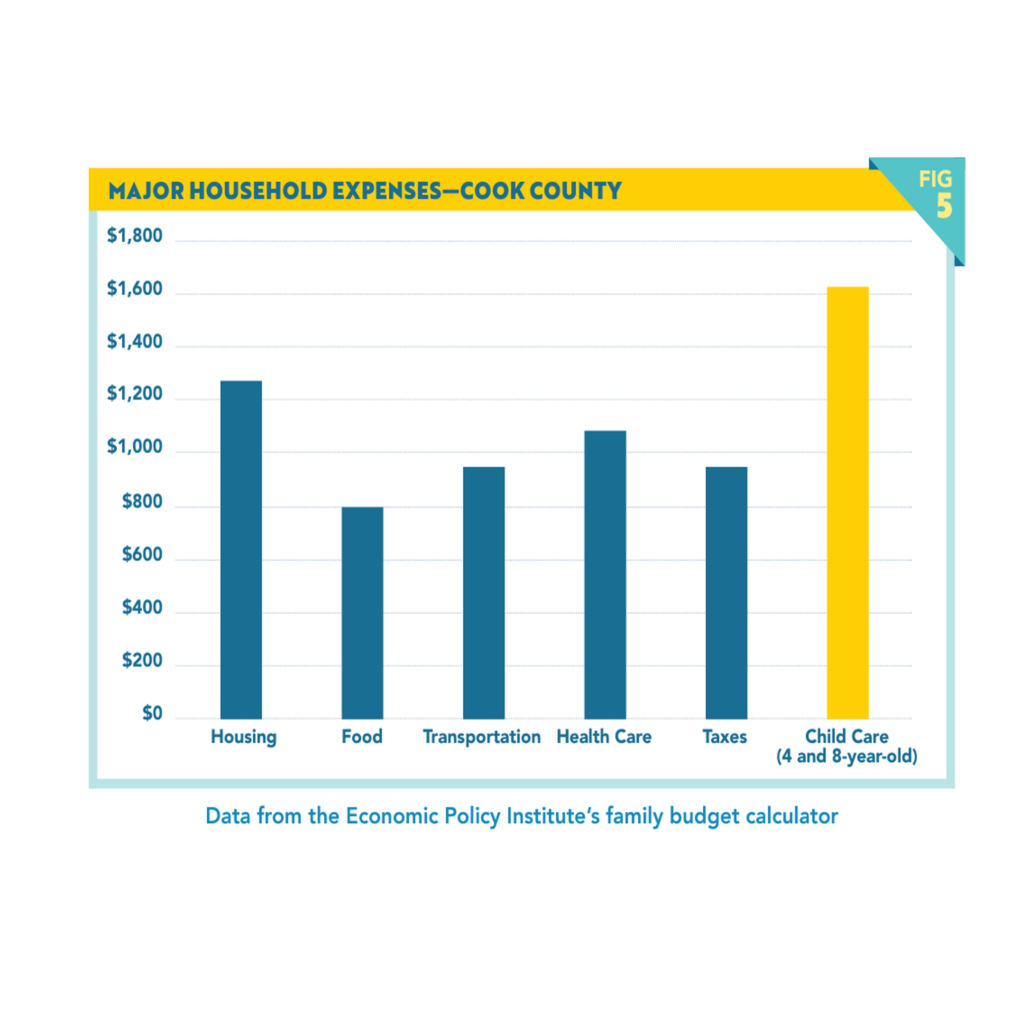
Unsustainable
- One in five child care workers in Illinois live in poverty, with many making the equivalent of less than half of minimum wage.
- In 2019, licensed family child care providers in Illinois made an average of $7.04 an hour. Early childhood educators made an average of just $13 an hour.
- In 2018-2019, the turnover rate for early childhood teachers was almost 33% and the turnover rate for early childhood assistants was almost 50%.
- Over 95% of Illinois early childhood teachers and family child care providers are women, with Black and Latinx women making up a disproportionate portion of Illinois’s child care workforce.
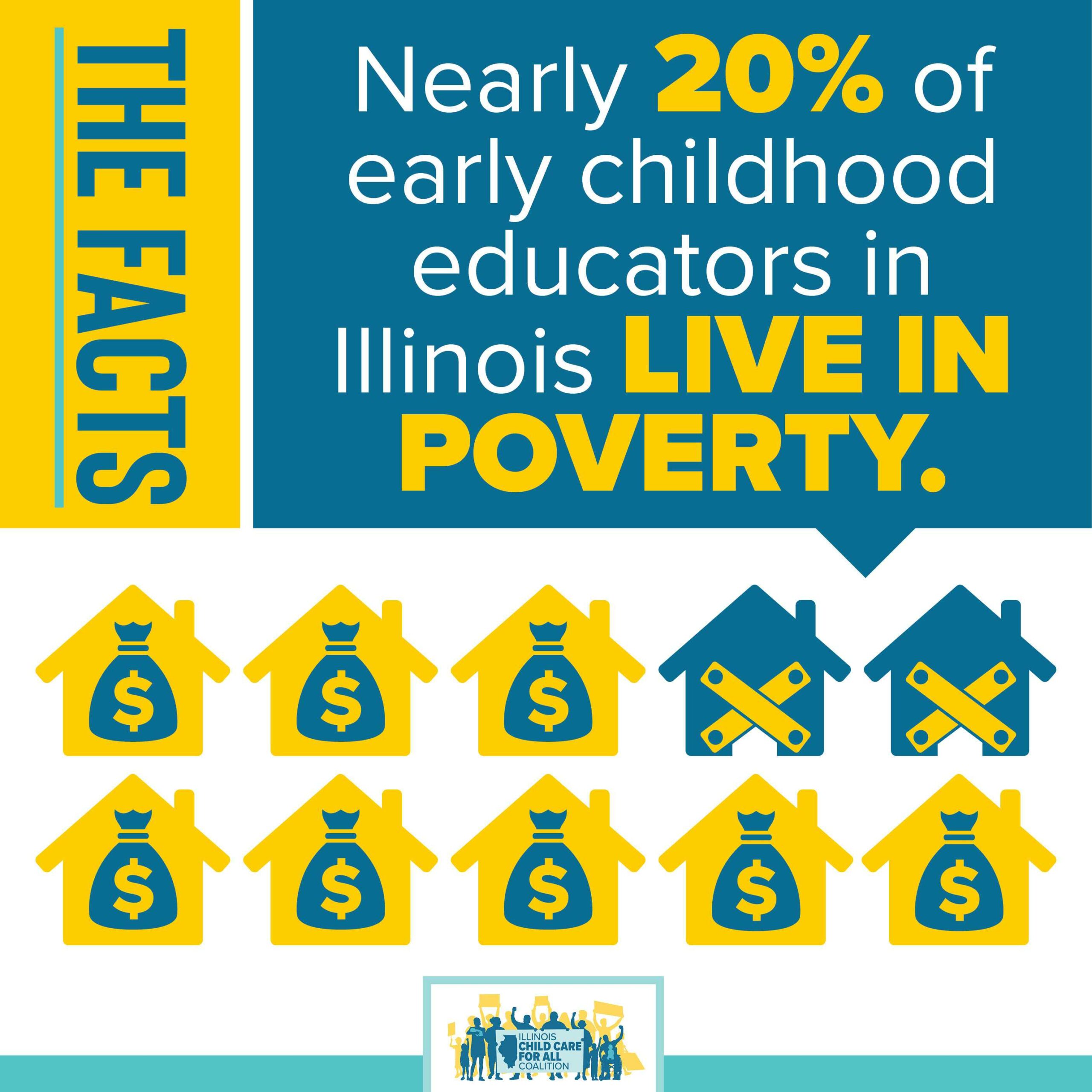
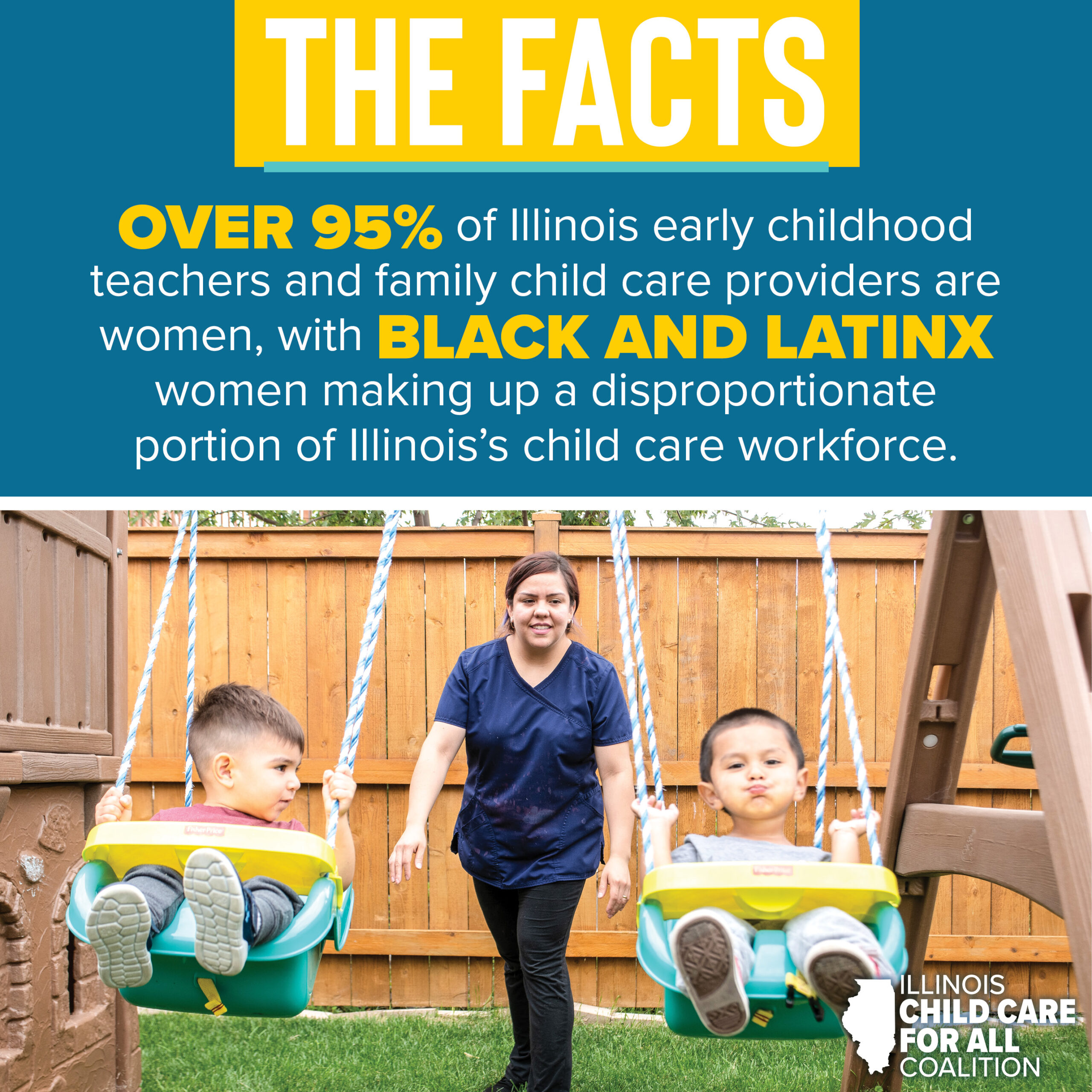
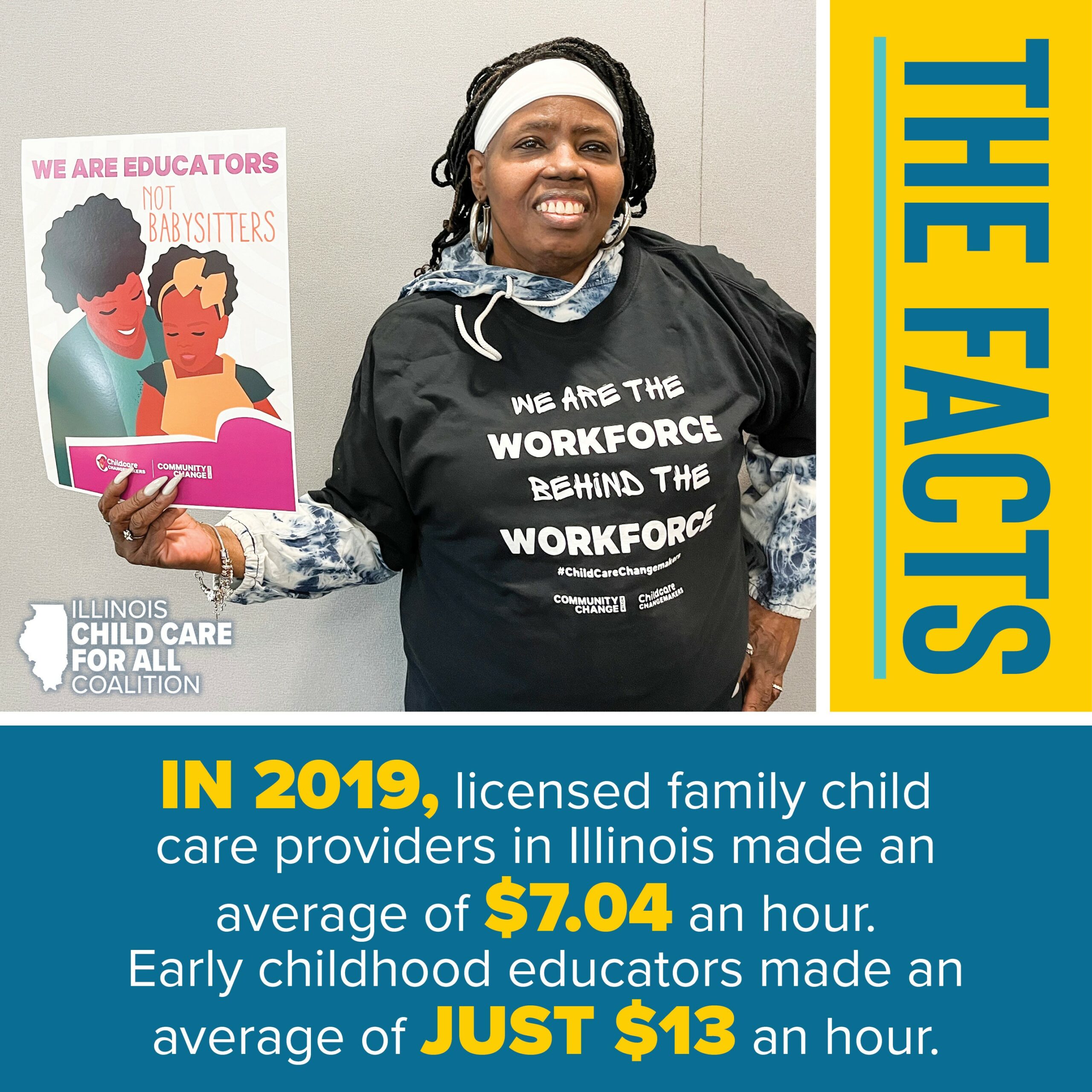
To Fix the System
- The states of New Mexico and New York have been leaders in finding solutions to properly and effectively fund their childcare systems, and Illinois should learn from these experiences.
- Rich corporations are not paying what they owe for child care. 70% of corporations in IL pay no state income taxes. Walmart, McDonald’s, and Amazon are the top three employers of Child Care Assistance Program (CCAP) parents.
